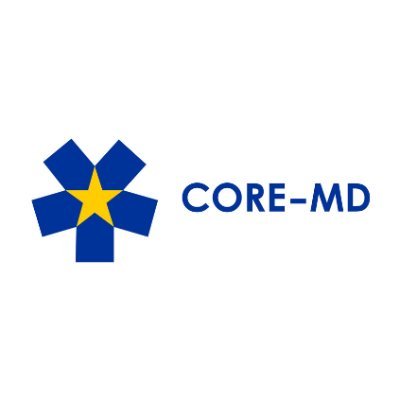
WHAT’S THE SITUATION AND HOW DOES THIS AFFECT CHILDREN?
Millions of children still die every year before the age of 5, worldwide, due to treatable conditions. Poor access to essential medicines is an important contributor to this mortality. Pneumonia accounts for 29% of under-5yo child deaths worldwide (WHO), but only half of children with severe pneumonia receive antibiotics (Walker, 2013). Universal access to oral antibiotics could reduce pneumonia-specific mortality by 42% (Hoppu, 2014).
It is also vital to ensure that children have access to vaccinations to protect them from preventable illness. Vaccine confidence is still a topic on which all healthcare providers must work. WHO figures show that, in 2017, 110,000 children died from measles, despite the existence of safe and effective vaccination. The U.K., Albania, Greece and the Czech Republic all recently lost their measles-free status, a stark reminder that not all children have access to vaccines to protect them from these illnesses. In a recent survey of Ukrainian medical students, 30% believed it is better for children to acquire immunity by getting the disease, and 60% believed vaccines cause autism. It is crucial that work is done within the medical community to ensure we protect our patients.
Children with non-communicable diseases (NCDs) and chronic conditions are also at risk of lack of access to medication, as decisions around access to medications are often determined by funding availability. One of the big ethical dilemmas nowadays, even in high-resource countries with a publicly funded health service such as the U.K., is how to ensure equitable access to expensive medication. A good example of this challenge is the use of Orkambi to target the underlying cause of Cystic Fibrosis (CF) in 50% of CF patients in England – up to 5000 children and young adults are estimated to potentially benefit, but Orkambi was not offered on the NHS as it was priced at £100,000 per patient per year. Recently, a deal has been negotiated between the Orkambi’s pharmaceutical company and the NHS to provide this particular medicine to patients.
These examples illustrate the effects and multiple causes of poor access from child patients to medicines.
Fortunately, there are many ways to address this challenge.
EXAMPLES OF GOOD PRACTICE
One way to improve access to medicines is to focus resources on a limited number of medicines. The WHO model list of essential medicines (EML) celebrated its 40th birthday in 2017. It was created in 1977 to ensure the most essential medicines were available to populations. To meet criteria for the list, medication needs to be proven effective and safe for its proposed use, and available in a form that can be stored safely. Children’s medications were not considered systematically until 2007, but the EML is now in its 7th edition (https://www.who.int/medicines/publications/essentialmedicines/en/) .
As previously mentioned, education around vaccination is vital to ensure children can access protection against preventable diseases. Innovations such as the Antwerp and Ukrainian Summer Schools on Vaccinology are a useful way to make sure health care professionals are up to date on current practice, and are able to work with families to ensure children’s access to vaccinations.
While the Orkambi example above is proof of a successful negotiation between a publicly funded health service and drug companies to help patients access the medication they need, all across the globe children may be denied similar opportunities if the cost of a certain medicine to the health system is deemed too much.
Children are often assumed to be unable to take tablets and therefore limited to liquid preparations, which can be more expensive and difficult to source, as well as more difficult to store. Kidzmed is a project converting children medicine intake from liquid form to tablets. Under this project, 21 out of 25 eligible children and young people completed the transition from liquids to tablets in only 3 months. Besides ensuring access to these medicines, this switch process saved £46588 per year (Tse et al, 2019).
OUR RECOMMENDATIONS
Young EAP and EAP advocate that children should be recognised in all public health initiatives, and that their specific needs should be considered in all policy decisions. Healthcare professionals should advocate for medicines to be available based on need, not ability to pay.
Medicines should be available in a form suitable for children, and healthcare providers should consider similar initiatives to the Kidzmed project to enable children’s access to a range of formulations, thus increasing the availability of medicines to children.
Finally, all healthcare providers should provide education to parents around vaccination, and advocate for vaccines as a vital tool to prevent devastating childhood diseases like measles. EAP and Young EAP support the WHO recommendations on making immunisation a priority and striving for a Europe free of vaccine-preventable diseases.
About the author:
Sian Copley
Sian Copley represents UK paediatric trainees within Young EAP, and is the Young EAP Representative for Advocacy. She is a 5th year resident from the UK working in the North East of England.
References
- World Health Organisation: Pneumonia: the forgotten killer of children
- https://apps.who.int/iris/bitstream/handle/10665/43640/9280640489_eng.pdf;jsessionid=3521AE999EE6A1BD96E19ADFA043491B?sequence=1
- Hoppu, K., Sri Ranganathan, S., Essential medicines for children, Arch dis child 2015; 100 suppl 1 s38-42
- Walker CL, Rudan I, Liu L, et al. Global burden of childhood pneumonia and diarrhoea. Lancet 2013;381:1405–16.
- Tse et al. The KidzMed project: teaching children to swallow tablet medication.
- http://dx.doi.org/10.1136/archdischild-2019-317512
https://www.bbc.co.uk/news/amp/health-49507253 - https://www.cysticfibrosis.org.uk/the-work-we-do/campaigning-hard/life-saving-drugs
- https://www.theguardian.com/society/2019/oct/24/nhs-england-vertex-agrees-price-for-orkambi-unaffordable-cystic-fibrosis-drug

